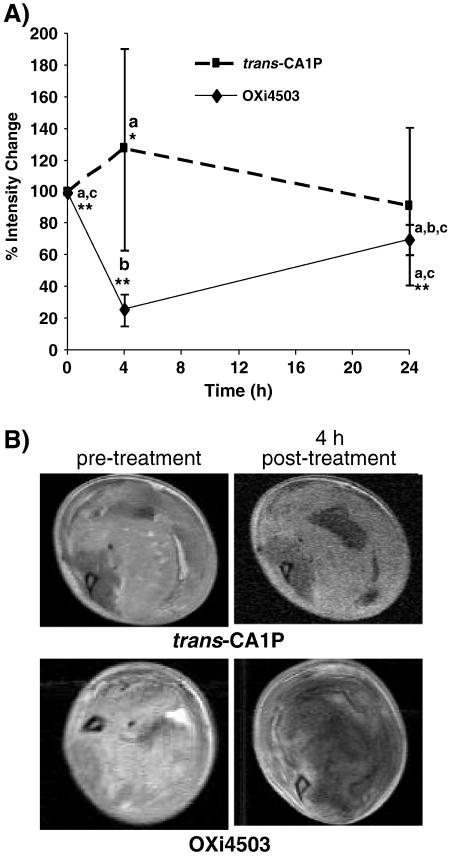Fig. 5.
Effect of OXi4503 and trans-CA1P (25 mg/kg) on tumor perfusion in mice bearing KHT tumors. (a) The percent change in signal enhancement of the tumor area due to diffusion of a gadolinium contrast agent was measured prior to, and 4 and 24 h after treatment with either trans-CA1P or OXi4503, from an average of at least 4 mice per group, ± SEM. Each mouse was used as its own control. Data points with different letters are significantly different from each other. *, p=0.02; **, p=0.0001. (b) Representative DCE-MR images of KHT tumors prior to treatment and again 4 h after treatment with either trans-CA1P or OXi4503. Images show bright areas of gadolinium diffusion. Necrotic areas remained dark. At 4 h post-treatment, tumors in mice treated with OXi4503 underwent vascular collapse and extensive tissue damage, as evidenced by the lack of gadolinium signal enhancement beyond the tumor rim.

